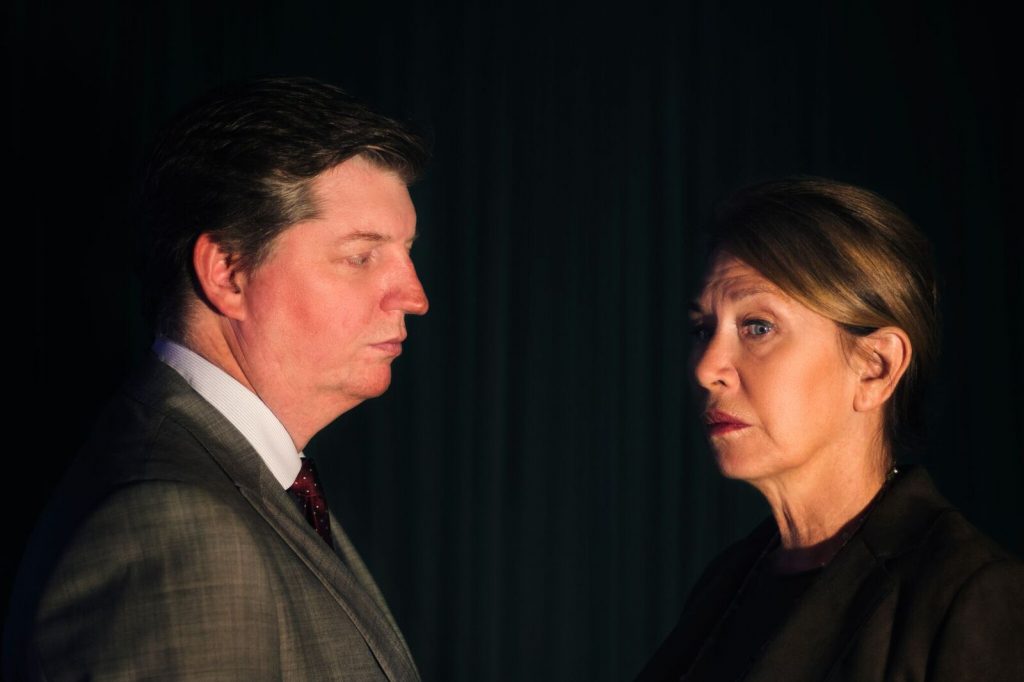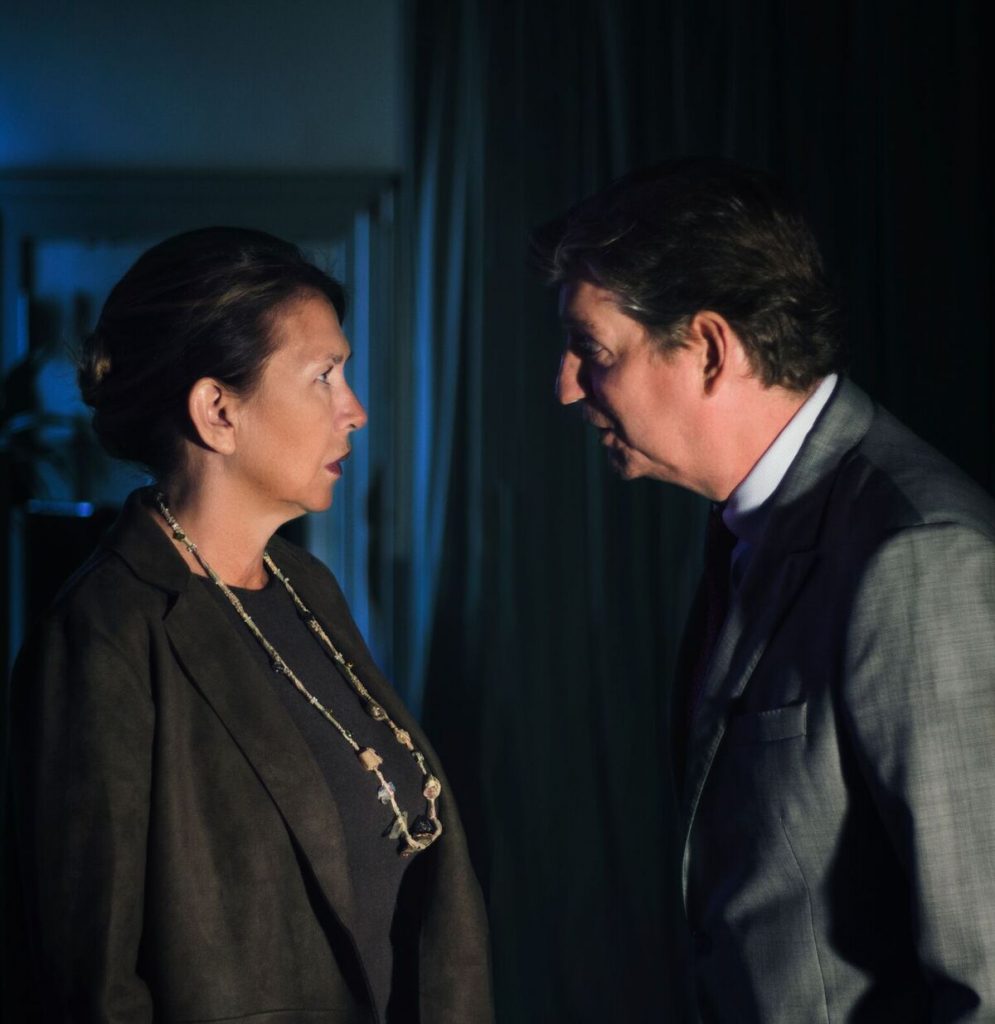At the Firehall Arts Centre until December 1, 2018
Tickets from $20 at firehallartscentre.ca or 604-689-0926

Credit: Pedro Meza
Posted November 16, 2018
Norwegian playwright Henrik Ibsen, often referred to as ‘the father of modern drama’, was a rabble-rouser in the late 19th century theatre world. A Doll’s House (1879) sent shock waves all over Europe when Nora walked out on her doting but condescending husband. Ghosts (1881) initiated a ferocious backlash from critics and audiences alike (“Gross, almost putrid, indecorum”, wrote one critic) when Ibsen introduced even a suggestion of venereal disease into that play. Some scholars believe An Enemy of the People (1882) was written in retaliation for the abuse heaped on him following Ghosts. And what retaliation: Dr. Stockmann, the protagonist, is prepared to take down his whole village and everyone in it when he reveals the village’s biggest money-making tourist attraction – a healing spa – is contaminated. He condemns in long-winded tirades his own brother (the mayor), the local newspaper, the head of the small business and tourism industry and what he calls “the compact liberal majority” – in short, pretty much everyone who does not agree that the spa must be shut down.
Donna Spencer, the Artistic Producer of the Firehall Arts Centre, using various translations (including the 1950s adaptation by Arthur Miller) adapted and directs this Firehall Arts Centre production now simply titled, The Enemy. She moves the play from a midsize village in Norway to a present-day, similar size town in the upper interior of BC. The spa, prepared to go toe-to-toe with Banff as one character declares, is now a spa and water park: Healthy Springs Spa and Water Park (HSSWP).
As well as shortening the play – now a couple of hours long plus intermission – and cutting back somewhat on Dr. Stockmann’s long harangues, Spencer switches the gender of several characters: Dr. Stockman (now Stockman, not Stockmann), a medical doctor, is now the widowed sister of the mayor, not the mayor’s brother. The president of the business and tourism association is also a woman, looking very corporate – smartly dressed, well-coifed, exuding confidence. Two young children have been cut.

Credit: Pedro Meza
Ibsen scholars write about Ibsen’s sense of humour but I struggle to find it in the original text (other than, possibly, Dr. Stockmann’s repeated inability to remember the family maid’s name, referring to her once as ‘Sooty’ because of soot on her nose). And there is little humour in this adaptation, either.
In the original text, the doctor is presented as an overly cheerful, childlike person who seems completely naïve about the consequence of blowing the whistle on the spa when a university lab report that he has commissioned confirms his suspicion: the water is toxic. It has been contaminated as a result of upstream tanneries, including one owned and operated by his father-in-law. Dr. Stockmann expects to be called a hero for what will be the bankrupting of the village and all those who live in it. Instead, he is vilified as an enemy of the people.
Spencer retains all that naivete in her adaptation and, given our 21st environment, it’s hard to believe.
The adaptation remains as relentless as the original with accusations of corruption and heavy-handedness, flip-flops, betrayals and bombastic pronouncements.
Jenn Griffin, as Dr. Stockman, and Paul Herbert, as Mayor Stockman, are well-paired: both are large presences and powerfully dominate the space when their characters are going at each other – which they do a lot of. Sibling rivalry has obviously continued into adulthood. Peter Anderson is wily and sly as tannery owner Martin Kell. The only characters that appear to be grounded in reality are Dr. Stockman’s daughter, Petra, spiritedly portrayed by Agnes Tong and decent David Horseman (Michael Scholar Jr.) Also in the cast are Daniel Arnold, Sharon Crandall, Braiden Houle and Donna Soares.

Credit: Pedro Meza
The show looks good with a b/w video projection (by Pedro Augusto Meza) of moving water. Scene changes appear in white lettering #HomeSweetHome, #The DailyPost, etcetera. The set is simple with a white floor, a few of pieces of black furniture and a white upholstered chair.
The issue that makes updating Ibsen’s play problematic is that in today’s litigious environment, a cover-up of water contamination by all the movers and shakers in a town is very difficult to imagine. Liability looms large these days; every level of government is acutely aware of what a class action can cost. And although shutting down the spa and water park for a couple of years and laying new pipe upstream of those polluting tanneries would be a tremendous burden on taxpayers, illness or death of villagers or tourists would cost even more in lawsuits. A 2008 Globe and Mail article about the 2000 Walkerton, Ontario e-coli scandal, for example, reads: “Latest figures obtained by The Canadian Press show a total of $65.5-million has been paid to more than 9,200 individual claimants. A further $13-million has been paid to Crawford and Co. (Canada), the adjusters overseeing the compensation plan under the auspices of the courts.” Liability is now the big bogeyman.
That being said, there are countless water systems across Canada – mostly on First Nations lands – that remain under boil water advisories. The cover-up is not that the water is bad; the cover-up is that nothing is being done about it.
If you can overlook the implausibility of the plot, The Enemy is still an instructive and unsettling look at how sides are taken, then switched out of self-interest. Everyone has a stake in the game – even the apparent hero, Dr. Stockman, who would like to one-up her brother and create a lasting legacy for herself.

